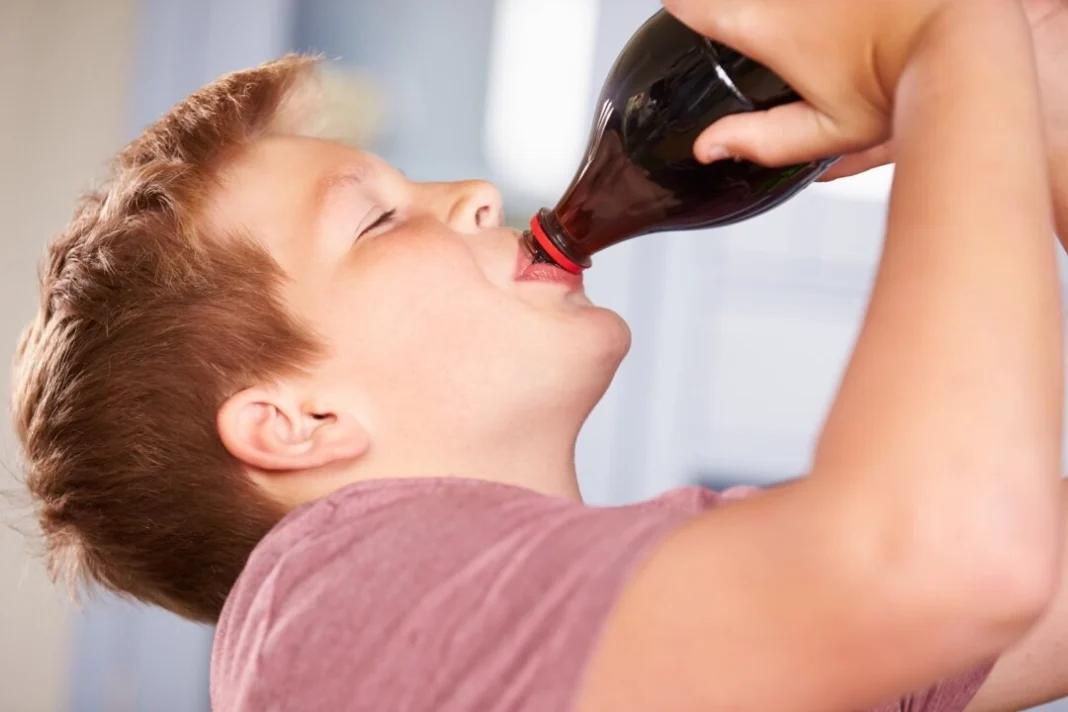|
Getting your Trinity Audio player ready...
|
By: Zrinka Peters
A significant risk factor for obesity and chronic disease can be found in an easily overlooked place—your drinking glass.
An extensive 18-year global study has found a 23 percent increase in sugar-sweetened beverage (SSB) consumption among children and adolescents, “parallel” to the rise in obesity, according to the authors.
As countries grapple with obesity-related health care costs projected to reach $18 trillion by 2060, the link between sweet drinks and lifelong health consequences is becoming more evident. This has prompted researchers to call for increased efforts to curb the consumption of SSBs.
Sugary Drinks Surge Worldwide
The population-based study, published in the BMJ in August, analyzed data on sugar-sweetened beverage consumption using 450 dietary surveys from 118 countries. The study encompassed 2.9 million people, broadly representing the global population.
Researchers examined SSB intake among children and adolescents aged 3–19 between 1990 and 2018. The study model categorized the data into seven distinct regions based on general similarities in risk profiles and disease outcomes. SSBs were defined as “any beverages with added sugars and ≥209 kJ (50 kcal) for each 237 g serving, including commercial or homemade beverages, soft drinks, energy drinks, fruit drinks, punch, lemonade, and aguas frescas.” One serving was standardized as 248 g (8 oz).
The authors found that, across the 185 countries studied, SSB intake increased by 23 percent among children and adolescents between 1990 and 2018. Overall, 10.4 percent of all young people worldwide drink an average of seven or more sugary drinks per week. The study also found substantial regional differences, with the highest mean rate of SSB consumption being in Latin America and the Caribbean (at 9.1 servings per week) and the lowest in South Asia (at 1.3 servings per week).
Of the 25 countries with the most children and teens, Mexico had the highest sugary drink consumption, followed by Uganda, Pakistan, South Africa, and the United States.
In the United States, where consumption of sugar-sweetened beverages among youth has seen some decline since 2005, intake remains high, with more than 60 percent drinking at least one sugary beverage on any given day, according to the Centers for Disease Control and Prevention (CDC). During 2015–2016, an average of 14 percent of dietary calories consumed by American youth came from added sugars, with SSBs being, by far, the most significant source.
The High Cost of SSBs
Sodas and other sugary beverages may owe their enduring appeal not only to taste but to low cost as well. Even though the average price of a 12 oz. can of soft drink has risen in recent years from a low of $0.33 per can in May 2018 to $0.58 per can in August, sodas are still relatively cheap compared to many lower-sugar alternatives, like the prebiotic soda ‘Poppi,’ which retails for around $2.50 a can, or even a bottle of drinking water at $2.18.
However, the cost to individual health and health care systems is much higher.
While obesity is a complicated disease with several possible causes, high levels of consumption of sugary beverages are a well-documented risk factor. Based on data collected between 2017 and 2020, the CDC estimates that nearly 42 percent of U.S. adults have obesity—a figure that has more than tripled since the early 1960s.
Similarly, large increases in obesity rates have occurred among children and adolescents, with around 20 percent of youth aged 2–19 now being obese, compared with 5.5 percent in 1980.





